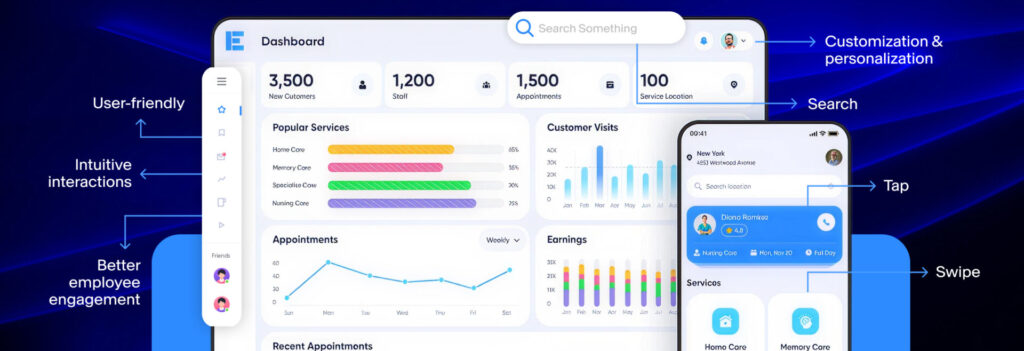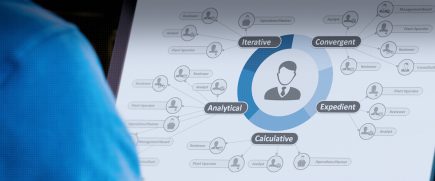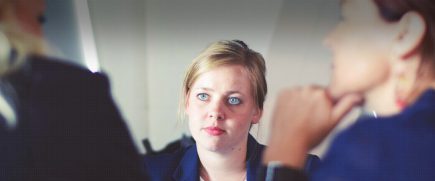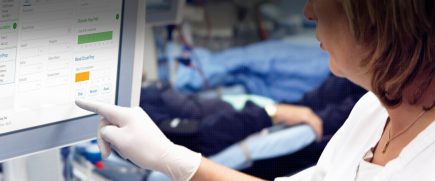Enterprise design once had a reputation. They were gray, clunky, and not function-first—rather function-only. Products like HR portals, SAP systems, and internal CRMs were never designed to instill delight in users, they were designed to do a quick job that either manages the company and moves business metrics. But in today’s experience-first world, even the tools we use within an organization need to be held at a high standard to ensure the best experience is created for users outside and inside the company.
We’ve entered an era where user experience (UX) expectations have seeped into every corner of work. They expect their tools to work well and feel good. That’s why internal communication products and even some modern CRMs now look and feel more like consumer apps than enterprise systems.
Stuti Mazumdar - July 2025

Shift Thinking Systems-First to Experiences-First
Enterprise tools were once built with a top-down logic. People commonly answered the following questions to create these products: what features does an organization need? How can we fit every function into one tool? Will users ever need hand holding on the product? The interface was treated as a shell over complexity, making usability the last priority at all times.
But that mindset has changed. Today’s enterprise users demand the same intuitive interactions they get from their favorite apps—swipe, tap, drag, drop, search. They want tools that understand them, they’re used to, and greatly reduce the friction between them and their work (automation is now a big part of this shift).
When Enterprise Feels Human, Work Doesn’t Feel Much Like Work
The consumerization of enterprise design, that in the current scenario simply means leveraging seamless usability, isn’t about gamifying serious workplace tasks. It’s about designing for the workforce that does that work on a daily basis. It’s about making it seamless and easy for them. It’s about making room for brand personality, responsiveness, and ease, even within tools that handle serious business processes.
Boosting Collaborative Efforts
In a hybrid or remote-first workplace, enterprise tools are the new office (yes, we made a conscious effort to not say ‘the new normal’). They’re where collaboration and communication often happen—and most importantly, it’s where employees may decompress and celebrate the culture within the organization. The digital environment is the employee experience. So, when that experience is clunky, it drags down productivity, morale, and engagement.
But when enterprise design prioritizes interaction, immersion, and micro-interactions focusing on the delight factor, we witness great shifts:
- Onboarding becomes easier. Intuitive interfaces reduce dependency on manuals and IT support.
- Employee engagement increases. Workers return to platforms that feel fluid and frictionless.
- Increases availability. With an enterprise tool seamless and adaptable, employees find it increasingly easy to quickly hop onto the platform to take care of pressing discussions, decisions, etc., allowing for improved productivity, engagement, and availability.
- Brand perception improves. Modern design elevates how the company is seen internally and externally.
Designing for Enterprise Ecosystems
Modern enterprise design also requires thinking beyond individual interfaces or user journeys. It’s not just about creating beautiful dashboards or mobile-friendly views. It’s about building flexible systems that evolve with the organization.
Enterprise users need:
- Consistency across tools, teams, and devices.
- Customization to map tools to how their teams work.
- Personalization that lets them use the tool as their personal workstation.
- Contextual intelligence to help them with what matters when it matters.
- Security and privacy baked into the experience.



